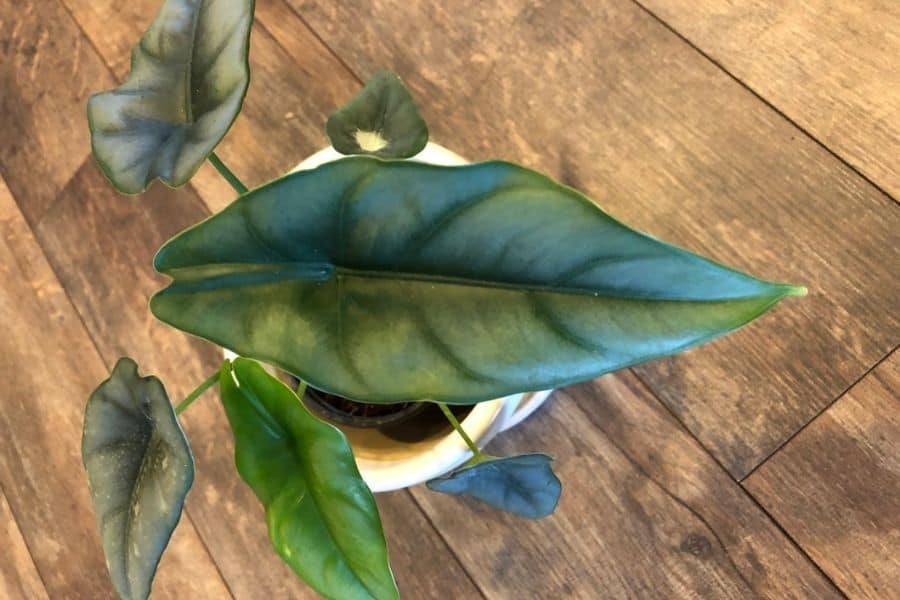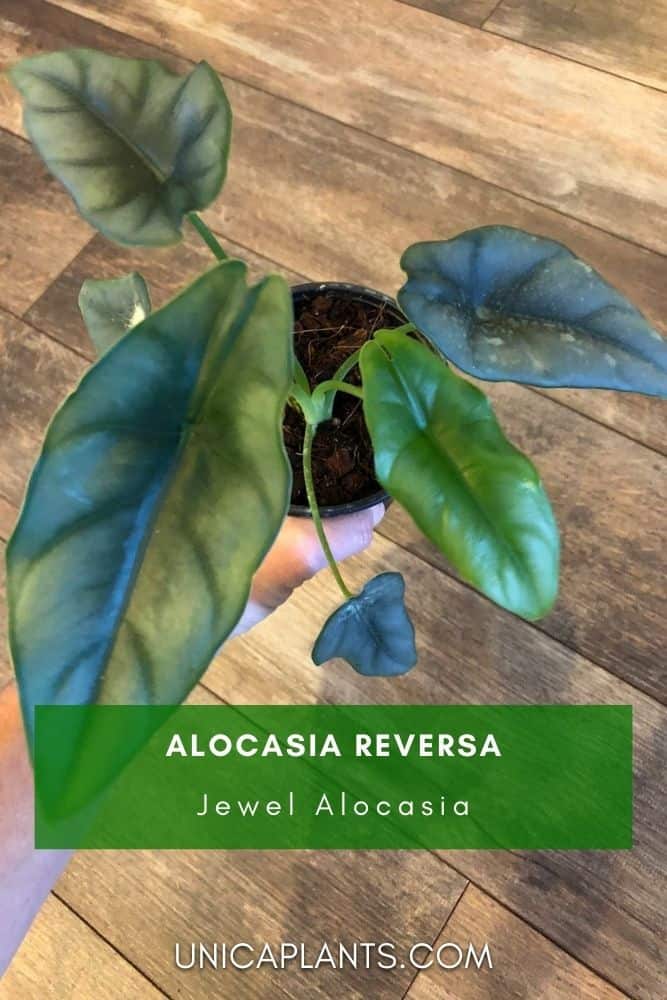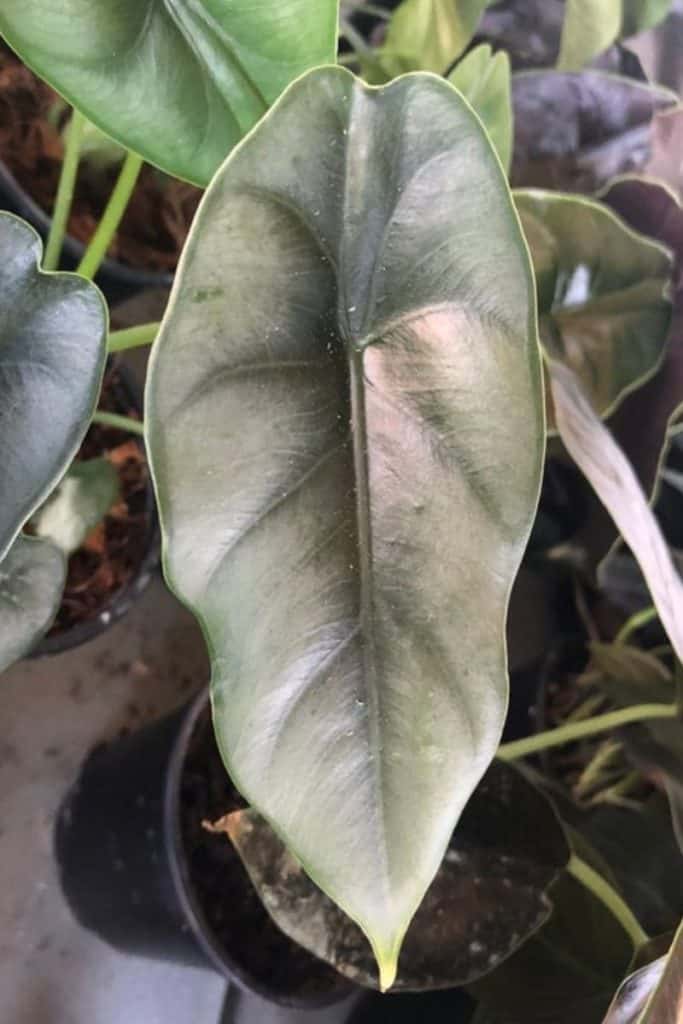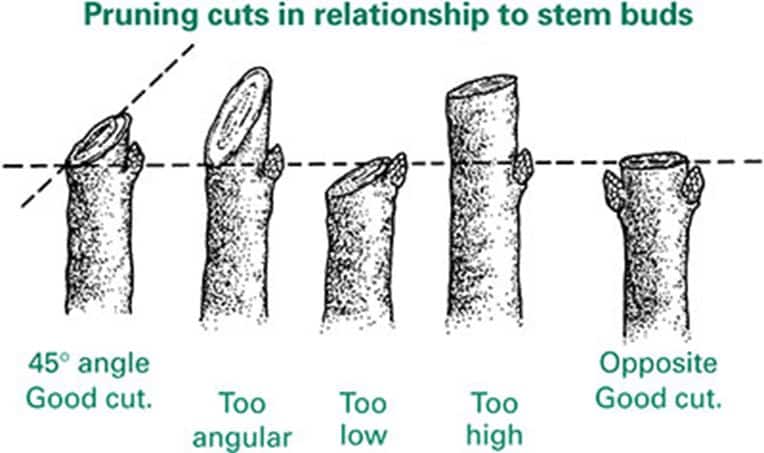
The Alocasia reversa is a beautiful and very rare exotic plant that can be grown as a house plant. All the best care and growing tips will be revealed in this guide!
The alocasia reversa has thick smooth leaves that are different tints of green. What makes Alocasia reversa so unusual is the color patterns on the leaves of the plant. If you look at other Alocasia species, they have light-colored veins on their leaves. However, the Alocasia reversa has dark-colored veins, which makes its pattern reverse. That is also why this plant is called "reversa".
The Alocasia reversa naturally grows in tropical rainforests on Borneo, a big island in Southeast Asia. It is a relatively small plant that will grow to about 16 inches (40 cm) tall and wide.
Growing and caring for this plant is a lot like the other alocasia species. However, to fully understand this plant, here are the best tips and tricks that you can use, including how to water the plant, the best soil to use, what fertilizer to use, what environment it likes, and how to propagate it.
Images by Ashley Reichwein from FancyPlantsyLLC.

Summary:
- Light: Bright indirect sunlight
- Water: Only water when the top 2 inches of the soil are dry
- Soil: Well-draining potting soil
- Fertilizer: Once every month (only in spring and summer)
- Size: The plant grows up to 16" (40 cm) tall
- Size: The plant's leaves grow up to 8" (20 cm) long
- Temperature: Between 65 and 75ºF (18 and 24ºC)
- Humidity: At least 60%
- Cold hardy: Not cold hardy
- Propagation: By division, offsets, and seeds
- Toxicity: Toxic to humans and animals
Contents
General Care for Alocasia reversa
The Alocasia reversa is not the easiest plant to grow and take care of if you are a total plant newbie. nonetheless, with a little bit of knowledge about this plant, you will be able to care for it!
Light
When growing plants you always want to mimic their natural habitat. Since the "reversa" naturally grows on the ground of a rainforest where the trees are blocking most of the direct sunlight. The best light conditions for this plant would be bright indirect sunlight.
Too much direct sunlight will cause the leaves of the plant to burn and eventually fall off. A couple of hours of morning sun probably won't hurt the plant, but it's safer to only provide the plant with indirect light.
Water
As a rule of thumb, you only want to water your Alocasia reversa when the top 2 inches (5 cm) of the soil are dry. This means in spring and summer times around 1-2 times a week and in the colder months around once a week. It will also depend on what type of soil you are using. More of that below.
Both overwatering and underwatering can quickly cause problems with this plant. When overwatering, the soil will stay too wet, which will decrease the aeration of the soil. Without oxygen and with a lot of water, root rot will become a problem.
Underwatering on the other hand will also harm the plant. In both scenarios, the leaves will start to droop and turn yellow.
An EASY method that I use to give my Alocasia plants exactly the amount of water that they need is by using a moisture probe. This probe will indicate how much moisture there is in the soil. For the Alocasia reversa, when the moisture probe gets to about 2, it's time to water the plant. Click here to check out the moisture probe on Etsy.
Soil
The Alocasia reversa naturally grows on and between large boulders where there is not a lot of soil. This is why the "reversa" thrives best in a soil mix that drains and aerates really well. You can easily make a lightweight soil mix at home with perlite, coarse potting sand, and peat (1:1:1) which would be great for this plant. You can also use a premade well-draining aroid mix.
If you use a heavy non-draining soil mix the soil of the plant will stay damp. Extended periods of excess water in the soil causes waterlogging, which then causes poor aeration of the roots, leading to low oxygenation and decay (root rot).
Repotting
When it comes to repotting, the "reversa" likes to be slightly root-bound and since the plant only grows to about 16" (40 cm), it only needs to be repotted every few years.
When the time has come and it's time to repot, take a plant pot that is 2 inches bigger than the previous pot. This will make sure the plant has enough room to grow new roots.
Fertilizer
Fertilizing the "reversa" once a month is enough if you want to give it an extra nutrient boost. The safest way to use fertilizer is by diluting it to ½ or ¼ of its strength. Always carefully read the instructions on the back of the fertilizer.
Feeding your plant with too much fertilizer will cause an excess amount of mineral in the soil (and plant) which will burn the leaves and can kill the plant over time. Also, never use fertilizer in the winter months as the plants don't need the extra nutrients during this period of the year.
Humidity
Since the Alocasia reversa naturally grows in a tropical rainforest, it needs at least 60% humidity to thrive. If you want the plant to grow and be healthy, the higher the humidity the better it will be.
In the winter months, when the air is much dryer, you definitely want to use a mister, spritzer, or humidifier to increase the humidity around the plant. This way you will keep the plant happy during these times. Low humidity levels can cause the leaves to become crunchy with a brown outline. When you see this happening, it's time to increase the humidity!
Common pests
Spider mites, mealy bugs, or aphids. The last thing you want on the "reversa" is a pest that could possibly damage it. The best way to prevent pests from infesting this plant is to keep the humidity around the plant always above 60%.
Another way to prevent pests from infesting is to carefully clean the leaves with a washcloth once every two weeks. Not only will the plant look good if its clean, it also will boost its health and can limit pests and diseases.
If the plant is already infested with a pest, you can easily make an effective pesticide containing 1 tsp of liquid dish soap, 4 tsp of neem oil, and 1 gallon of water. Or you can use a premade and organic pesticide with natural oils (including neem oil) and water. Click here to check out this organic and easy-to-use pesticide.
If you like this plant, you might also like the rare Alocasia azlanii (Red Mambo).

How to Propagate Alocasia reversa
Propagating the Alocasia reversa can be done by either division, offsets, or seeds. using division is probably the easiest and most successful way. Propagation can best be done in early spring when it's time to repot the plant.
Division
For this method of propagation, you want to take the "reversa" out of its pot and split the rhizome using a sharp knife. Be sure that there are plenty of roots on both parts. Next, use a well-draining soil mix (as mentioned in this article) and plant the divided plant in a pot with drainage holes.
Now care for the plant like you used to and enjoy your propagated beauty!
Offsets
The Alocasia reversa can also be propagated by offsets, which can grow throughout the whole year and are actually baby versions of the plant. If you use this method you only have to cut the roots that are connected to the mother plant. The best way to do this is by using a sharp knife or a pair of pruning shears. Now gently pull the baby away from the mother plant and you can repot the baby plant into a smaller pot in a lightweight and well-draining soil mix.
Tip: Don't start chopping away offsets (babies) as soon as they pop up. Wait till they're at least 1 inch (2.5 cm) before removing them from the mother plant. The bigger the baby, the more success you will have growing a new "reversa"!
Seeds
Since the Alocasia reversa is a rare plant, buying legitimate seeds from a seller might be even rarer. If, however, you managed to get these seeds from somewhere the first thing you want to do when using them for propagation is soak them in distilled water overnight and sow in a well-draining potting soil (in the fall).
Sow the seeds 0.5" (~1cm) in the soil. After that, water the seeds lightly and put a plastic bag over the containers to provide high humidity. Next, put the pot with the seeds (and plastic bag) in bright indirect sunlight and keep the soil moist.
In addition, you can add a heat mat under the containers to keep the seedlings warm. The heat will improve the germination success rate.
After a couple of months, when the seedlings are 2" (5cm) tall, carefully transplant them into bigger pots with well-draining potting soil.
Tadaa! You have now successfully propagated the Alocasia reversa!



Leave a Reply